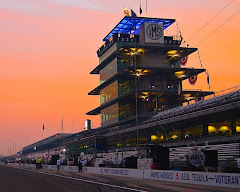
Dave Kallman of the Milwaukee Journal-Sentinel confirms the worst.
If the Mile makes it to next season, then it will have NASCAR's Triple-A feeder series to thank. The IRL has failed in Milwaukee."...as much as the fans of the IRL race are devout, there aren't enough of them willing to buy tickets, and the event does not make money for the track."
Milwaukee to Baltimore: the New Math
Meanwhile, attendance figures for the proposed Baltimore Grand Prix just keep getting better. Is it not amazing that the same series that couldn't draw in Milwaukee is going to be the most popular thing to hit the streets of Charm City since John Unitas?

Let's see. IndyCar attracted approximately 28,000 spectators at Milwaukee this year.
28,000 * 4 days = 112,000 fans for the Baltimore Grand Prix
2,000 crew, officials, vendors, volunteers, etc. * 4 days = 8,000 more in attendance
Total Baltimore Grand Prix Attendance = 120,000
Awesome!
Incidentally, the crowd at this year's Honda Indy Toronto was estimated at between 30,000 and 40,000 spectators. I can't find any records of public subsidies for that one. But we do know that the IndyCar teams incur the Toronto Tax as part of their engine lease payments to Honda.
Just think of the exposure. How else might Baltimore be seen on television by an audience like this?
Warning to the People of Baltimore
This race is a boondoggle. Most of the money that might be spent at the Baltimore Grand Prix would likely be spent in Baltimore anyway. This thing will generate less economic output than an Orioles' weekend series with the Red Sox.
Don't take my word for it. Ask the good people of San Jose. Check with the folks in Edmonton. Consult the Texas Comptroller of Public Accounts.
Ask yourselves the following question.
If IndyCar racing attracts so many spectators, then why is it being dropped by facilities that are in the business of promoting auto racing events? Why can't IndyCar earn a profit at the nearby Richmond International Raceway, or the Milwaukee Mile, one of the world's most historically relevant race tracks?
IndyCar racing is a market failure, a product that has been rejected by auto racing consumers in the United States. That is why it needs government subsidies for a minor league event at a glorified test track in Birmingham and for a contrived street festival in Baltimore.
This event will never be profitable, although the same might not be true of the promoter - that will depend on the amount of the government handout. Baltimore and the State of Maryland will subsidize this mediocrity every year for as long as it exists.
This IndyCar Series does not deserve the Milwaukee Mile. It certainly doesn't deserve to be bailed out by Maryland taxpayers.
Roggespierre



